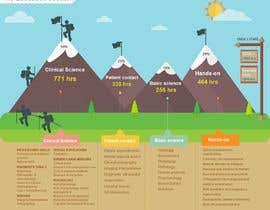When you think about discomfort monitoring alternatives, you might find yourself evaluating the benefits and drawbacks of numerous strategies, including acupuncture, non-prescription medications, and physical therapy. While many techniques offer relief, they commonly come with their own set of obstacles, like negative effects or prolonged treatment times. Acupuncture stands out for its special ability to advertise self-regulation with less risks. However how does its efficiency contrast to more standard techniques? The subtleties of these techniques can considerably affect your options, and exploring them further can cause unusual insights.
Introduction of Discomfort Administration Techniques
When it involves taking care of discomfort, you have a variety of techniques available. These approaches can vary from traditional strategies to a lot more different therapies. Recognizing your choices is crucial in finding what functions best for you.
One common method is over the counter medications like advil or acetaminophen, which can give fast relief for light to moderate pain. Prescription medications, including opioids, could be required for more serious discomfort, though they come with risks of dependency and negative effects.
Physical therapy is another efficient method, focusing on exercises and stretches to strengthen muscles and boost flexibility. This technique typically assists in taking care of persistent pain conditions.
In addition, some people turn to even more all natural options, such as massage therapy, which can ease stress and boost circulation.
Mind-body techniques, like mindfulness meditation or yoga exercise, assist you handle discomfort by decreasing stress and anxiety and enhancing your mental resilience.
Finally, way of life modifications, such as maintaining a healthy diet regimen and regular workout, can play an essential role in total pain monitoring. Each method has its advantages and disadvantages, so it's important to explore what fits your requirements and preferences best.
Advantages of Acupuncture
Acupuncture uses a distinct method to discomfort management that sticks out among various methods. By targeting particular factors on your body, it stimulates the flow of power, or "qi," promoting natural recovery and reducing pain.
One of the biggest advantages is its very little adverse effects. Unlike some drugs, which can bring about dependency or undesirable health and wellness concerns, acupuncture is a holistic therapy that urges your body's self-regulation.
You'll likely discover that acupuncture sessions can assist ease persistent discomfort, frustrations, and even stress. Many people experience a feeling of relaxation and well-being during and after therapy, which can enhance overall lifestyle.
Plus, it's a flexible alternative; it can be utilized along with various other therapies, making it a terrific enhance to your existing discomfort administration strategy.
Another substantial advantage is that acupuncture can be customized to your specific demands. Your professional will certainly evaluate your problem and create a personalized treatment strategy, ensuring you receive the treatment that ideal supports your healing.
With its old origins and expanding approval in modern-day medication, acupuncture attracts attention as an engaging option for discomfort relief.
Comparing Effectiveness and End Results
Pain monitoring techniques vary extensively in their efficiency and outcomes, making it essential to understand how they compare to one another. When taking into consideration options like acupuncture, physical therapy, and medicine, you'll locate distinctive differences in how each approach addresses discomfort.
Acupuncture, for example, often supplies alleviation for chronic discomfort problems, with researches revealing considerable enhancements hurting degrees for many clients.
On the other hand, medications like opioids can successfully manage acute pain but lug dangers of dependency and negative effects.
Physical treatment concentrates on rehab and might take longer to reveal results, which can be annoying if you require instant relief.
When examining these techniques, think about your particular pain kind and your individual wellness objectives. Some people find that a combination of approaches works ideal for them.
For https://activator-chiropractor-ne95172.thelateblog.com/33583070/visualize-a-circumstance-where-your-expertise-of-chiropractic-practitioners-and-neck-and-back-pain-is-not-as-precise-as-you-believed-explore-the-truths-that-test-usual-ideas-and-unlock-new-potential-for-your-total-wellness , you may gain from acupuncture sessions together with physical therapy to optimize recovery.
Eventually, comprehending the performance and outcomes of each technique will assist you make informed decisions about your pain management technique, permitting you to select the method that best fits your requirements and way of life.
Verdict
In recap, acupuncture sticks out as a beneficial option to typical discomfort administration methods. It uses fast relief and fosters self-regulation without the threats of dependence related to medicines. While physical therapy may demand even more time for outcomes, acupuncture can supply instant advantages, making it an enticing option for those looking for remedy for persistent discomfort and stress. By integrating acupuncture right into your discomfort administration plan, you can enhance your total wellness and reclaim control over your wellness.
